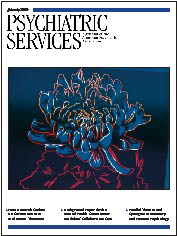In Reply: Dr. McCusker concludes that the authors "correctly state that the study affirmatively answered their research question." But regarding the COVR software that was being validated, he believes that "pending additional research findings, the instrument has, at best, questionable clinical usefulness." Although our article acknowledged that many questions "await studies using the software in actual clinical settings," we believe that at the present time the software "may be helpful to clinicians." The manual that accompanies the software makes clear that the software is a "tool" to inform clinical judgment and that "the application of clinical judgment represents the standard of care" in violence risk assessment.
Dr. McCusker's coin-flipping analogy can be seriously misleading. Given its high true-negative rate, the COVR's overall accuracy makes it vastly better than a coin flip. Only after patients were classified by the software as high risk did they have a roughly 50 percent probability of being violent. The utility of the COVR seems most reasonably evaluated against alternative approaches to risk assessment rather than against absolutist expectations. In this regard, the findings reported in the COVR validation study represent a level of accuracy equal to the highest true-positive rate reported for unstructured clinical prediction, with a much lower false-negative rate (1). The clinical predictions reported by Lidz and colleagues (1) were achieved after detailed patient interviews by nurses, residents, and attending psychiatrists. In contrast, it takes seven minutes, on average, to administer the COVR.
1. Lidz C, Mulvey E, Gardner W: The accuracy of predictions of violence to others. JAMA 269:1007–1011,1993Crossref, Medline, Google Scholar



